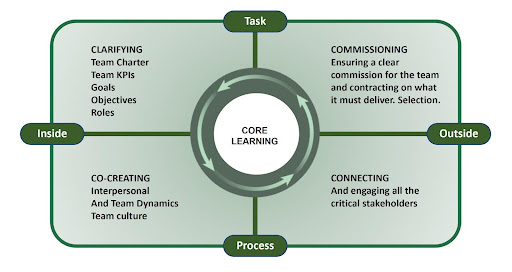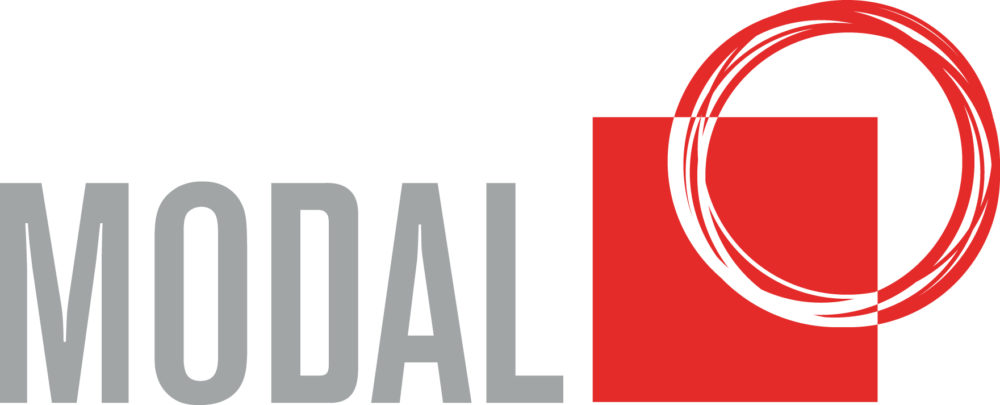Outside-In
Two years ago I had an ‘aha’ moment when I realised the development approach we were using to work with leaders and teams was wrong.
For years I had been facilitating and coaching with a process that started by looking at the internal dynamics of a team and then helping the team build trust, healthy conflict, accountability etc. Reading an article by Peter Hawkins, Professor of Leadership at Henley Business School, author, and a pioneer on building collective leadership, stopped me in my tracks.
I was approaching teams as if they existed in a vacuum. By helping them focus first on the internal or inside dynamics of the team, they could move towards high performance. The only problem was this could often create high performing silos. Nice and energising for the team, but not always aligning with the best interests of the organisation as a whole. Peter’s article highlighted the need for teams to take an outside-in approach to their development and performance.
What does that mean?
A team is only as good as the value it is adding to its customers, key stakeholders and the organisation as a whole. High performing silos can contain happy, engaged and productive employees – just often doing work that is not aligned to what is required of all business units to perform at a high level. Improving team performance has to start with engaging with its key customers and stakeholders and asking the following questions:
- What value do you and the organisation need from this team?
- If the team was fulfilling its purpose, what would it be delivering? How would it be working with other aspects of the organisation?
- What is the team currently doing well that is adding to that value?
- What are the improvement opportunities for this team in order to deliver maximum value? What expectations are we not yet fully meeting?
- What relationships does the team need to work on in order to deliver greater collective value?
By asking these questions of key stakeholders, the team can get clear on its purpose and its commission. What it must deliver in order to be successful. It will also gain an understanding of how closely it is delivering on that remit and what gaps there are. Only then will the team have a true holistic understanding of what the rest of the business and its customers need from it.
Understanding this will provide the ‘bigger picture’ to the team which is necessary for it to prioritise both what it needs to deliver, and how it can best do that. This then provides the compelling insight into what the team must work on, and get better at, in order to improve. If the team doesn’t first understand the impact it is having on the rest of the organisation, it is the equivalent of seeing a need to get across a river, and building a bridge – only to find out the organisation really needed a tunnel.
Peter Hawkins has developed a five elements model of team effectiveness – the 5 C’s:
- Commissioning–Engaging with the stakeholders external to the team to understand what is required from the team.
- Clarifying –Defining shared accountabilities, goals and roles, and the behavioural principles the team will align to.
- Co-creating – Working on the interpersonal and team dynamics, aligned to Patrick Lencioni’s 5 dysfunctions of a team, for example, such as trust, psychological safety, conflict norms, commitment to the teams goals, accountability and collective results.
- Connecting – actively working to improve relationships with the team’s external stakeholders and receive consistent feedback on how the team is delivering (and where it is not yet).
- Core Learning –This is in the centre of the 5 C’s model because it needs to be a continual focus of how the team operates. Talking openly about failures as well as successes and conducting lessons-learnt reviews to enable continuous learning.
These elements are illustrated in the diagram below. Whilst it is important to start with ‘Commissioning’ and that outside-in focus, and then move on to the other stages, the model is not linear. The team may need to clarify shared priorities but also work on building trust in parallel, and then loop back to re-clarifying with external stakeholders what it needs to deliver because self reflection and new learning has started to emerge in the team. There may be some need to move back and forth between the elements.
 Source: Leadership Team Coaching : Developing Collective Transformational Leadership, Peter Hawkins
Source: Leadership Team Coaching : Developing Collective Transformational Leadership, Peter Hawkins
Future Back
As well as starting with an outside-in approach. It’s also useful to start with a ‘future back’ one as well. We see too many teams that are caught up looking backwards or stuck too much in the immediate here-and-now in their thinking and focus. Research out of the NeuroLeadership institute in Sydney during the pandemic found that too many leaders were being drawn into the problems and drama of the day-to-day, and were spending their time firefighting. This results in trying to find solutions to immediate problems and ends with prioritising time to deal with these.
Whilst some of this is necessary, much of it is not the role of leadership. If you’re spending lots of time in day-to-day problem solving, then you’re probably doing the work of the level below.
The NeuroLeadership Institute found that, when leaders prioritised time and focus to first map out a vision, a plan and key milestone to achieve that plan, this future-back approach was much more successful in galvanising team members. It not only helped the leaders create more certainty, it did this for team members, as well as increasing a sense of belonging and autonomy. The result was more engaged and focused teams. We know from neuroscience that this works because people function best when these psychological needs are met.
Next Steps
If you want to take more of an outside-in and future-back approach to leading your team, here are some potential next steps:
- Communicate the 5Cs model to your team and explain the first step is engaging with external stakeholders to better understand what they need the team to deliver and identify the current gaps in what is currently being delivered and how it is being delivered.
- Get feedback from your external stakeholders. You could do a short survey using the questions earlier in this blog. Or, organise a meeting and sit down and ask them these questions (best to send the questions through prior so you receive considered responses).
- Take the stakeholder feedback back to the team. Celebrate the positives and table the improvement opportunities.
- Ask your team to create a collective vision for how the team will be performing in 12 months time. Have your key stakeholders represented in that vision. Run an exercise that allows the team to be creative and have some fun with it. Draw it, paint it or get them to build it with lego!
- Have a collective conversation with the team about what we need to start/stop/continue to deliver on the vision for the team and to meet our stakeholder needs.
- Book follow up meetings with the key stakeholders in 3-6 months time to check what they are seeing in terms of the team’s effectiveness.
References
Leadership Team Coaching : Developing Collective Transformational Leadership, 4th revised edition, Jun 2021 By Peter Hawkins.





